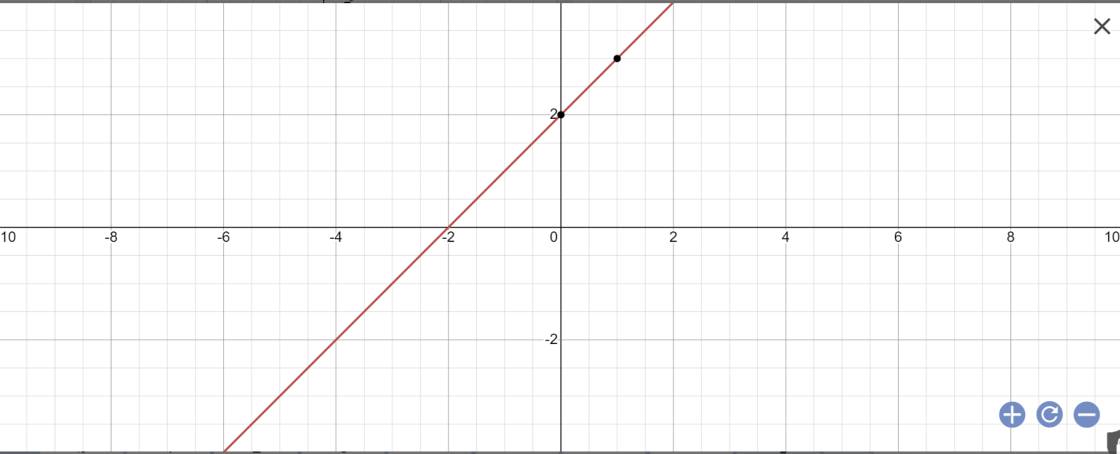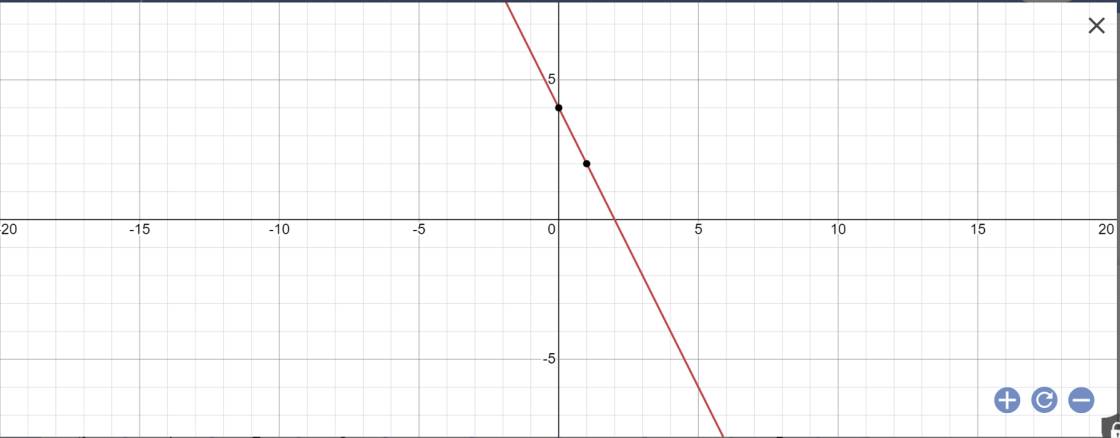
Hãy nhập câu hỏi của bạn vào đây, nếu là tài khoản VIP, bạn sẽ được ưu tiên trả lời.


1: Khi m=2 thì y=(2-1)x+2=x+2
Vẽ đồ thị:

\(tan\alpha=a=1\)
=>\(\alpha=45^0\)
2: Thay x=1 và y=0 vào (d), ta được:
\(1\left(m-1\right)+m=0\)
=>2m-1=0
=>m=1/2
3:
y=(m-1)x+m
=mx-x+m
=m(x+1)-x
Điểm mà (d) luôn đi qua có tọa độ là:
\(\left\{{}\begin{matrix}x+1=0\\y=-x\end{matrix}\right.\Leftrightarrow\left\{{}\begin{matrix}x=-1\\y=1\end{matrix}\right.\)

2:
a: Thay k=1 vào hàm số, ta được:
y=(2-4)x+5=-2x+5

a: 
b: Vì (d): y=-2x+4 có a=-2<0
nên \(\alpha\) là góc tù
c: Tọa độ A là:
\(\left\{{}\begin{matrix}y=0\\-2x+4=0\end{matrix}\right.\Leftrightarrow\left\{{}\begin{matrix}y=0\\-2x=-4\end{matrix}\right.\)
=>\(\left\{{}\begin{matrix}x=2\\y=0\end{matrix}\right.\)
Vậy: A(2;0)
Tọa độ B là:
\(\left\{{}\begin{matrix}x=0\\y=-2x+4=-2\cdot0+4=4\end{matrix}\right.\)
Vậy: B(0;4)
O(0;0): A(2;0); B(0;4)
\(OA=\sqrt{\left(2-0\right)^2+\left(0-0\right)^2}=\sqrt{2^2}=2\)
\(OB=\sqrt{\left(0-0\right)^2+\left(4-0\right)^2}=4\)
Vì Ox⊥Oy nên OA⊥OB
=>ΔOAB vuông tại O
=>\(S_{OAB}=\dfrac{1}{2}\cdot OA\cdot OB=\dfrac{1}{2}\cdot2\cdot4=4\left(đvdt\right)\)
góc 45 độ
135 độ mới đúng chứ.